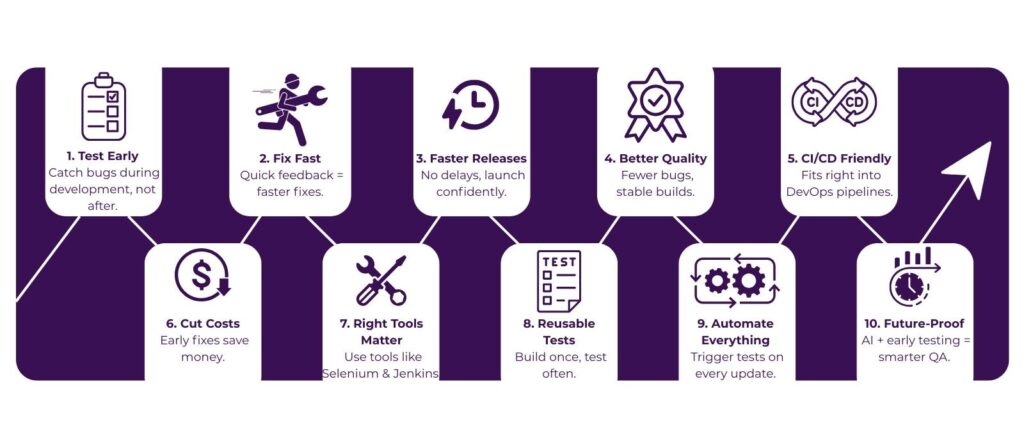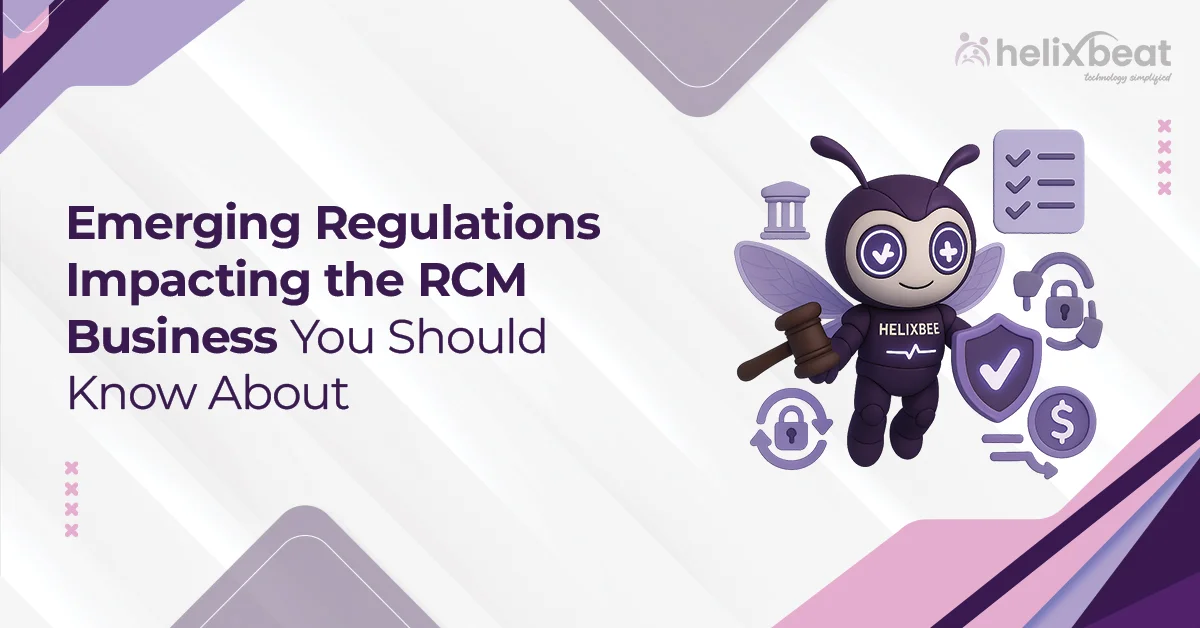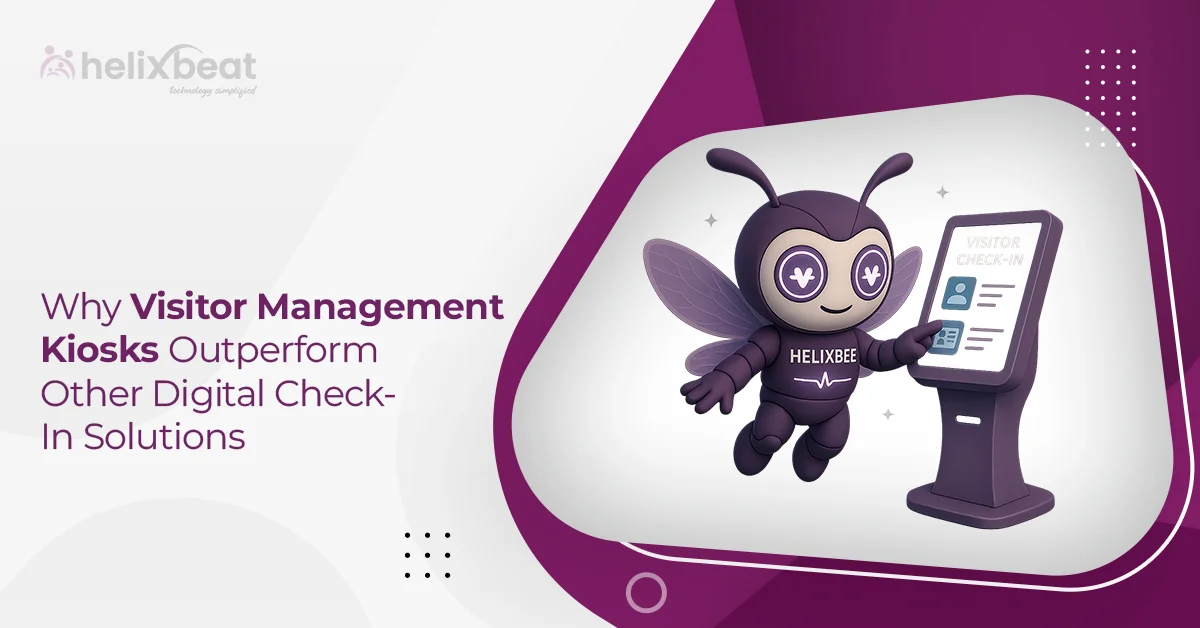You’ve built a great product, but just before launch, something breaks. A hidden bug or missed test can cause a delay in your product launch. It’s a familiar story for many development teams trying to keep up with rapid releases.
That’s why continuous testing plays an important role.
Instead of waiting until the end, it runs automated tests throughout the development cycle, spotting problems early, reducing risks, and helping your team move faster with fewer surprises.
And the world is catching on. The global continuous testing market was worth $1.17 billion in 2024, and it’s expected to grow to $2.14 billion by 2033, rising at a steady 7.9% CAGR.
At Helixbeat, we provide end-to-end software testing services designed to seamlessly integrate continuous testing into your DevOps workflow. Whether you’re starting out or scaling up, we help you test smarter. In this blog, we’ll explain more about continuous testing and its revolution in software development.

Table of Contents
What is Continuous Testing?
Continuous testing is the practice of running automated tests throughout the entire software development process, not just at the end. It helps teams catch bugs early, get fast feedback, and release updates quickly without compromising quality.
This approach is a key part of modern DevOps and CI/CD pipelines, making sure that every code change is tested as soon as it’s made. Whether it’s a small bug fix or a major feature, continuous testing keeps your software reliable at every stage.
Difference Between Continuous Testing and Traditional Testing
In the modern tech world, teams need to build and release software quickly without making mistakes. That’s where continuous testing in DevOps plays an essential role. It helps by running automated tests throughout the entire process. Here’s a simple comparison between continuous testing and traditional testing.
| Aspect | Continuous Testing | Traditional Testing |
| Timing | Runs tests throughout the development lifecycle | Testing happens only after development is complete |
| Approach | Automated, integrated into CI/CD pipelines | Mostly manual, isolated from development workflow |
| Feedback Speed | Instant or real-time feedback | Delayed feedback after full build is completed |
| Bug Detection | Detects issues early and continuously | Bugs are found late, often close to release |
| Deployment Readiness | Enables frequent, reliable deployments | Slower releases due to late-stage bug fixes |
| Team Collaboration | Encourages collaboration between Dev, QA, and Ops | Teams often work in silos |
| Risk Management | Lower risk through constant validation | Higher risk due to last-minute testing |
| Tools Used | Uses tools like Jenkins, Selenium, JUnit, TestNG | Often relies on standalone manual or scripted testing tools |
| Suitability | Best for agile and DevOps-driven environments | Suited for waterfall or linear development models |
With the help of continuous testing services from Helixbeat, a company can release better software on time. It makes testing a smooth part of development and greatly reduces the chances of errors.
Advantages of Continuous Testing
Continuous testing helps to identify issues early, reduces manual effort, and creates a more stable release process.
Here are some key advantages of continuous testing:
- Faster Feedback: Automated tests provide quick insights into whether new code is working as expected. Developers can fix issues immediately instead of waiting until the end of the development cycle.
- Quicker Release Cycles: Continuous testing supports faster development by reducing delays caused by late-stage bug detection. This enables teams to deliver features and updates more frequently.
- Improved Software Quality: Since testing happens continuously, bugs are detected early and often. This leads to more stable builds and fewer issues reaching the production environment.
- Better DevOps Integration: Continuous testing fits naturally into CI/CD pipelines. It allows development, QA, and operations teams to work together with better visibility and collaboration.
- Cost Efficiency: Fixing bugs during development is much cheaper than addressing them after deployment. Continuous testing reduces the chances of costly rework and post-release issues.
By adopting continuous testing, teams can build software that’s not only faster to release but also more reliable and maintainable in the long run.
3 Steps to Implement Continuous Testing
Adopting continuous testing doesn’t just mean automating a few test scripts. It requires a strategic approach that aligns with your development workflow. Here are three essential steps to get started:
1. Selecting the Right Tools
Choosing the right continuous testing tools is the foundation of an effective testing strategy. The tools should support automation, integrate seamlessly with your CI/CD pipeline, and be compatible with your tech stack.
Popular tools include Selenium, JUnit, TestNG, Cypress, and Jenkins. Look for tools that can scale with your team and offer reporting, version control integration, and cross-platform testing capabilities.
2. Developing Effective Test Cases
Once the tools are in place, the next step is to design reliable and reusable test cases. Focus on covering critical functionalities through unit, integration, and regression tests.
Keep the test scripts modular and easy to update, especially as your codebase evolves. The goal is to create tests that catch issues early without slowing down the development process.
3. Integrating Testing into Development Pipelines
The final step is embedding these tests into your development workflow. Continuous testing works best when it’s fully integrated into your CI/CD pipelines, triggering automatically with every code commit or build.
This helps catch bugs in real-time and keeps the entire team aligned on the health of the application throughout the development cycle.
By following these three steps, teams can build a strong foundation for continuous testing, helping them release software faster, with greater confidence and fewer errors.
Challenges Involved in Continuous Testing
While continuous testing offers significant benefits, implementing it effectively comes with a few challenges. Here are some common issues teams may face:
- Unstable Test Environments: Creating and maintaining test environments that closely mirror production can be difficult, leading to inconsistent results.
- Flaky or Unreliable Tests: Tests that pass or fail randomly can reduce trust in the testing process and slow down development.
- Toolchain Complexity: Managing multiple tools for different types of testing (unit, integration, performance) can become overwhelming if not well integrated.
- High Initial Setup Time: Setting up continuous testing frameworks and pipelines requires upfront effort in terms of time, resources, and planning.
- Lack of Skilled Resources: Not all team members may be familiar with automation tools or scripting, creating a skills gap that slows down implementation.
- Integration Challenges: Seamlessly integrating continuous testing with existing CI/CD tools and workflows can be technically complex.
Solving these challenges requires a mix of the right tools, team training, and often support from expert continuous testing services that can help streamline the process.
Core Components of Continuous Testing
1. Test Automation Frameworks
A test automation framework is the foundation for building, running, and managing automated tests. Frameworks like Selenium, TestNG, or Cypress provide the structure and rules for writing reusable and maintainable test cases.
2. CI/CD Integration
Continuous testing must be tightly integrated with CI/CD tools such as Jenkins, GitLab CI, or CircleCI. This allows tests to run automatically every time code is pushed, merged, or deployed.
3. Test Data Management
Access to accurate and consistent test data is crucial. Automated scripts should be able to generate, reset, or manage data for different test scenarios without manual intervention.
4. Reporting and Analytics
Dashboards and reports provide visibility into test results, helping teams track failures, monitor trends, and make informed decisions. Real-time feedback is essential for fast resolution.
6 Different Types of Continuous Testing
1. Unit Testing
These tests focus on individual functions or methods in the code. They run quickly and help developers catch issues early during the development phase.
2. Integration Testing
Integration tests check how different modules or services interact with each other. They ensure that data flows correctly and that APIs or internal processes are functioning as expected.
3. Functional Testing
Functional tests validate the software against business requirements. They confirm that features work correctly from an end-user perspective.
4. Regression Testing
Regression tests are essential in continuous testing to verify that new changes haven’t broken existing functionality. These tests are typically automated and run with every build.
5. Performance Testing
This includes load and stress testing to check how the system performs under various conditions. It helps identify bottlenecks and scalability issues early in the process.
6. Security Testing
Automated security scans detect vulnerabilities in code, third-party libraries, or configurations. These are important for identifying risks before deployment.
Together, these components and test types form the backbone of a strong strategy for continuous testing in software testing.
What will be the future of Continuous Testing
AI and Machine Learning in Continuous Testing
AI and ML are enhancing continuous testing by predicting failure points, optimizing test coverage, and reducing flaky tests. They bring smarter automation and faster, data-driven feedback.
Shift-Left Testing
Shift-left testing pushes test activities earlier in development, enabling faster bug detection and better code quality. It aligns well with continuous testing in DevOps workflows.
Shift-Right Testing
Shift-right testing focuses on real-world validation through user monitoring, A/B testing, and performance checks post-deployment, improving reliability after release.
Final Thoughts
Testing often becomes a problem when it’s done too late. Last-minute bugs create unnecessary pressure on the team and can delay the product launch.
Continuous testing solves this by running tests automatically during every step of development. It helps catch problems early, speed up releases, and improve the quality of your software.
If you’re looking for support, Helixbeat offers software testing services that make continuous testing easy to set up and manage. We help you test faster, fix issues sooner, and build better products on time.
Book a free consultation to discover how continuous testing can benefit your team.
FAQs
1. What is the continuous testing process?
The continuous testing process involves running automated tests at every stage of software development from code commits to deployment. It helps teams catch bugs early, get fast feedback, and release updates more frequently and with higher confidence.
2. Which tool is used for continuous testing?
There are many tools used for continuous testing, depending on the type of test. Common tools include Jenkins for automation, Selenium and Cypress for UI testing, JUnit and TestNG for unit testing, and GitLab CI/CD, CircleCI, or Travis CI for pipeline integration.
3. What is the difference between continuous testing and automated testing?
Automated testing refers to using tools to run tests without manual effort, while continuous testing takes it a step further by integrating these automated tests into the development and deployment pipeline. Continuous testing ensures tests run automatically and consistently throughout the lifecycle, not just at one stage.
4. What is CI/CD in testing?
CI/CD stands for Continuous Integration and Continuous Delivery/Deployment. In testing, CI/CD means automatically running tests every time code is integrated, ensuring that each change is safe to release. It speeds up development while maintaining quality.
5. What do you mean by continuous testing in DevOps?
Continuous testing in DevOps means embedding automated testing directly into the DevOps workflow. It supports rapid development by checking code quality continuously, reducing risks, and making sure every update is reliable and ready for release.
6. Why is continuous testing important for DevOps professionals?
Continuous testing for DevOps professionals is essential because it enables fast, automated feedback on code changes throughout the development pipeline. It helps maintain quality, reduces release risks, and supports the speed and agility that DevOps teams aim to achieve.














